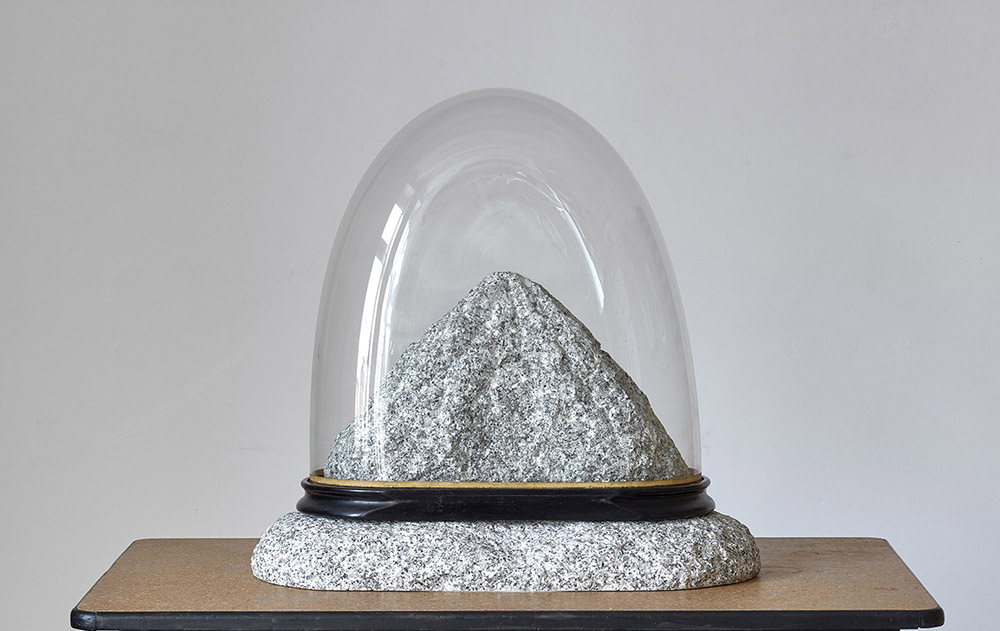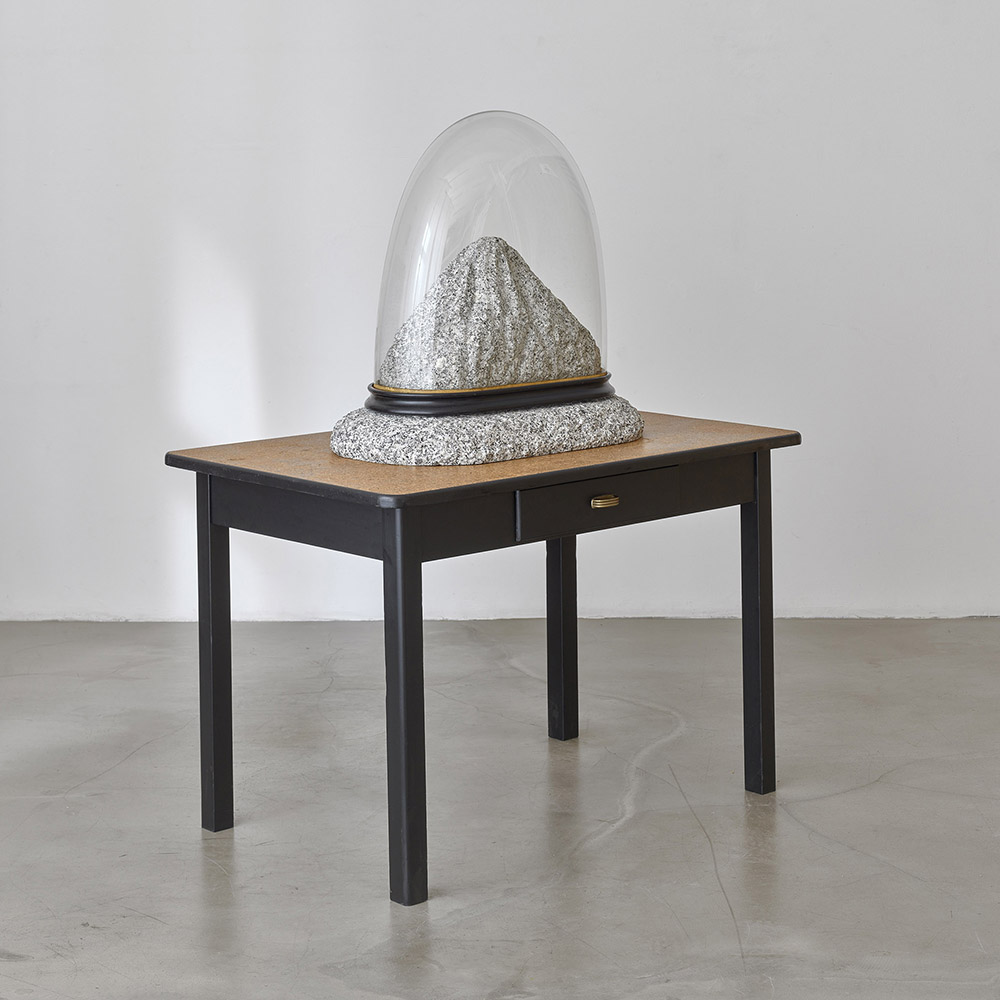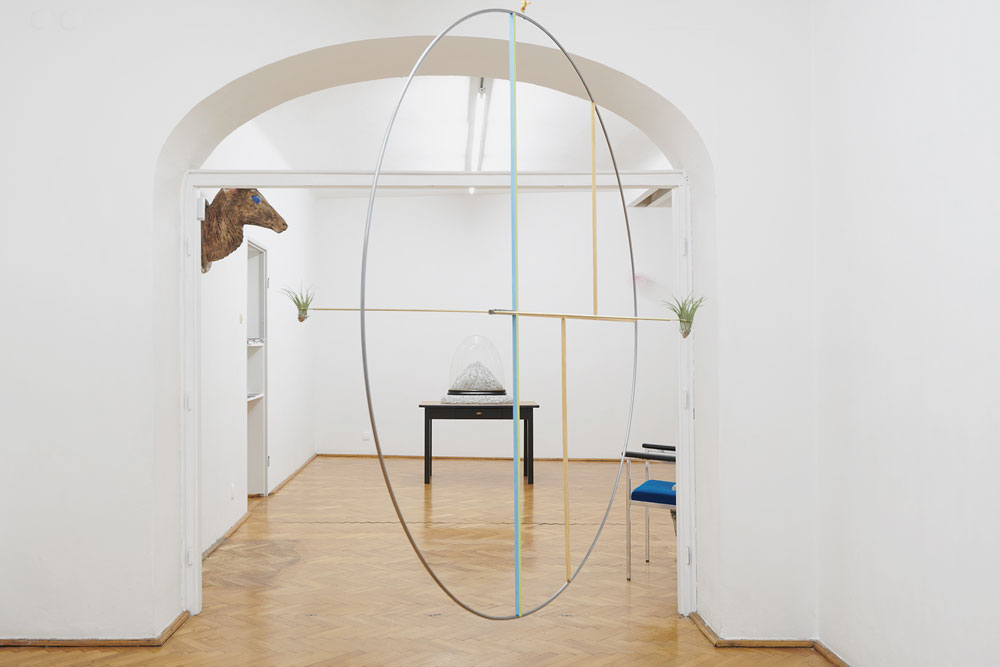National Monument
2024
- Schlesischer Granit, Glas, Holz, Farbe
- 137 x 110 x 70 cm
- Silesian granite, glass, wood, paint
- 137 x 110 x 70 cm


Text on occasion of the solo exhibition "Domestication" at Le Guern in Warsaw by Małgorzata Jędrzejczyk
It is not we who define objects, but they define us. Instead of merely reflecting the meanings once assigned to them, they take part in their production. They take you into a world where the tissues of meaning are just emerging and intertwining. Ulrich Vogl's works tell stories that seem personal and individualised but they are capacious enough to be nobody's. They take on contours only in the making as they interact with other objects and our own stories.
Objects make interiors habitable and they transform them into homes. Things let us tame space and break the emptiness of bare walls. Ulrich Vogl uses everyday objects that, although they beguile with their apparent closeness, mutated, combined, and decomposed, reveal their flip side. Instead of a home, the works shown in Domestication build a labyrinth where meanings rub up against each other and tangle with each other. Ulrich Vogel's works show that "objects cannot be reduced to material, tangible and usable or depletable goods, which we commonly refer to as <
Ulrich Vogl chooses things that have a biography. However, the marks left on them by previous owners are obliterated by the artist's transformations, which helps to emancipate these objects from individualised meanings. A chair, a map, or a yarn from an unravelled old jumper, set in the context of a foreign era or environment, become props stripped of their roots and open to the construction of their new life stories. In National Monument (2024), Ulrich Vogl combines granite from the Lusatian region, an old wooden kitchen table, and a decades-old small display cabinet, which he transforms into an ironic commentary on the concept of a monument and of a nation. National Monument highlights the arbitrary nature of all symbols, but also the instability of meaning, a trap luring all attempts at defining clear-cut divisions and ascribing universal and unquestionable meanings to objects.
On the other hand, the vacillation and uncertainty that occur when things wander into regions where they do not belong in the work entitled Iceberg Theory or Eisbergtheorie, result in an unexpected combination of materials and associations. The green stone, visible on both sides of the seat, strips the chair of its original function and the absurdity creeping into the juxtaposition throws the chair off its obvious trajectory of thought. In Ulrich Vogel's work, confident, safe, predictable, tame, familiar, and partially worn objects undergo a process that leaves them with no or twisted meaning. The unpredictable open-ended arrangement of forms and meanings is replaced by micro-worlds woven from a system of passages, transitions, and illusions.
Invented by Freud, the notion of Unheimlich helps trace the movement of objects as they wander between contexts, alienate and experience the vagaries of meaning that creep in and knock them out of a sense of certainty about their meaning. Freud used spatial nomenclature and associations with home [Heim] as a place signifying that which is close, familiar, well-known, and recognised. Freud's Unheimlich points to the opposite of these qualities and highlights what is unclose, unfamiliar, unknown, and unrecognised. Unheimlich is thus a shadow from which the hitherto invisible reverse emerges.
However, Ulrich Vogl's works do not build up an atmosphere of fear or menace but rather disarm objects, and a hearty smile and a glance with a wink accompany this neutralization process. They play with forms and meanings, and objects "are always part of a frivolous, experimental and conceptual process leading to a culmination where the work will have been reduced to its basic elements and with a playful execution as its visible part" (Ulrich Vogl). Yet, playfulness is not innocent: it reveals a process of meaning construction and deconstruction, the evaporation of sharp boundaries and clear concepts. When transferred into the realm of politics or social life, this mechanism becomes a powerful tool that is available for plenty of use and misuse scenarios.

